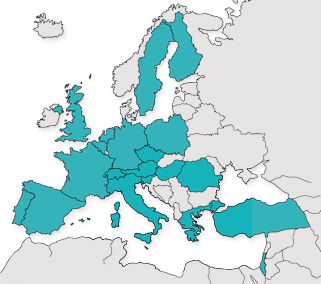WHY CATRENE The European semiconductor industry is characterised both by very fast product and technology evolution and by strong growth. Indeed this industry spends nearly 20% of its annual € 28 billion turnover on R&D. About 80% of this R&D is carried out in Europe, which means a total R&D effort in Europe of about € 4 billion. Total public funding in Europe for this effort is in the order of € 650 million a year. While this may seem like a large number, it is in reality below average. Overall in the European Union, about 2% of Gross National Product (GNP) is devoted to R&D – as compared with 2.6% in the USA and 3% in Japan. Of this 2%, about 45% – or 0.9% of GNP – is based on public financing. In absolute terms, this means that there is about € 200 billion spent on R&D in Europe, with about € 90 billion of public financing. If the semiconductor industry were to receive the same 45% level of public financing, it should be receiving about € 1.8 billion. Even if the financing of academic work in this field is added to the € 650 million of financing for industry, the result remains far from this figure. At the same time, it should be realised that this industry does not benefit directly from public investment as is the case for Health and Transportation sectors. In fact, the public sector is under investing in ICT. Public investment represents only 20% of the ICT market in Europe, with the public sector taking 45% of GNP. As has been demonstrated earlier, the semiconductor industry is making a contribution to society which goes far beyond its contribution to Gross Domestic Product (GDP); it is simply the main enabler for most of the new services to which we have grown accustomed.
The future of this industry in Europe depends very much on a continuation of public R&D support. Not only public support, but also co-operation is key. For such cross-border co-operation with public support to be successful, it must have the flexibility and the fast response to market opportunities that are typical for this industry. The EUREKA programmes JESSI, MEDEA and MEDEA+ have demonstrated how this can be done. One of the successes of MEDEA+ and of the previous EUREKA programmes has been to foster a dynamic European ecosystem that gained a critical mass on a worldwide scale and has created champions. As done for the previous programmes, CATRENE has the goal to develop a complete ecosystem around the semiconductor industry. EUREKA programmes are currently part of a global support network for nanoelectronics R&D that comprises also a national and regional level, including:
| ||





